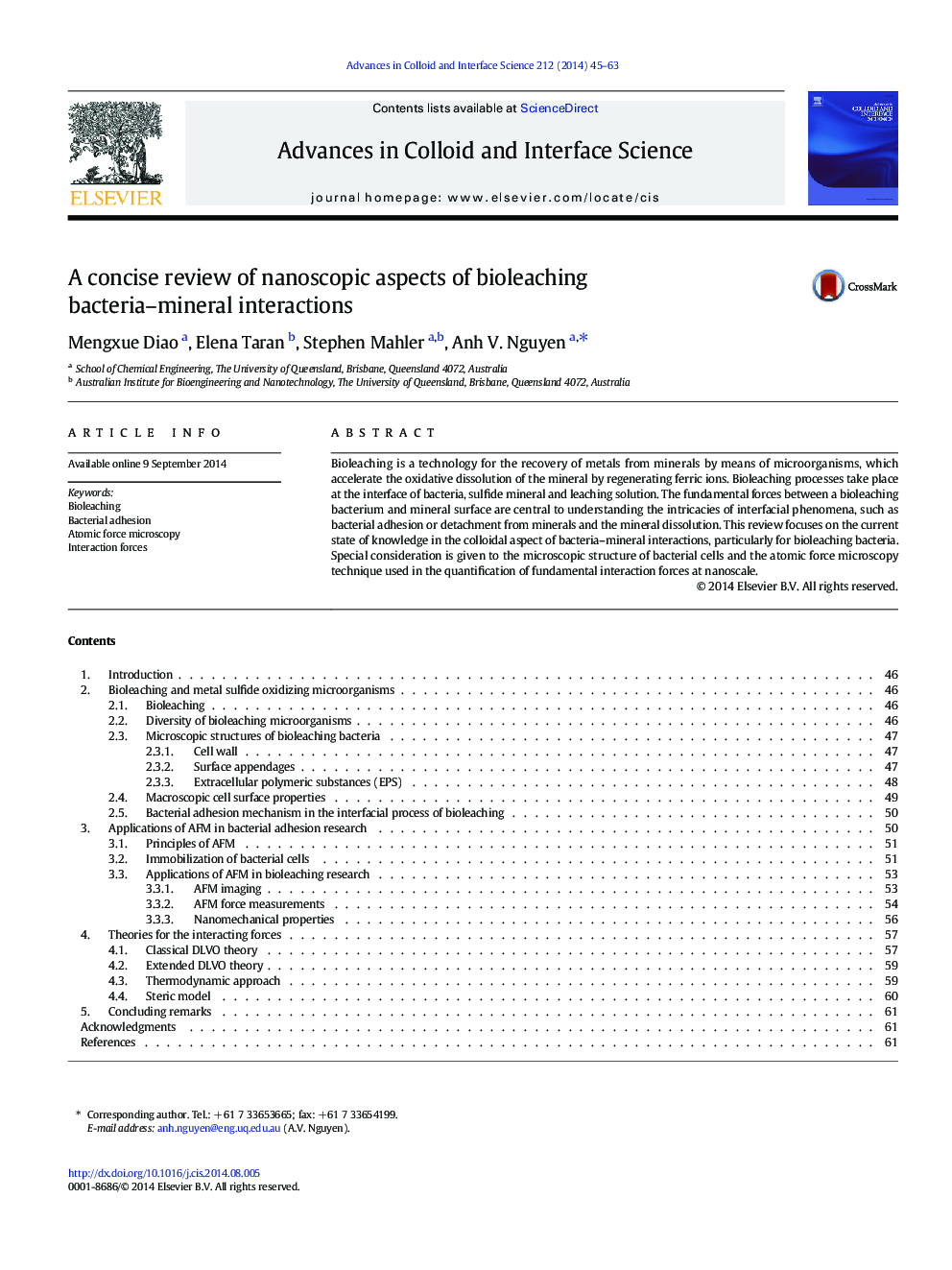| Article ID | Journal | Published Year | Pages | File Type |
|---|---|---|---|---|
| 590712 | Advances in Colloid and Interface Science | 2014 | 19 Pages |
•Bacteria adhesion to mineral surfaces mediates bioleaching processes.•Bacterial surface appendages and EPS play a vital role in adhesion.•Review of quantitative measurements of bacteria–solid interaction forces using AFM•DLVO and thermodynamic theories cannot fully explain bacterial adhesion behavior.•Steric forces dominate the interaction between cells and substrate surfaces.
Bioleaching is a technology for the recovery of metals from minerals by means of microorganisms, which accelerate the oxidative dissolution of the mineral by regenerating ferric ions. Bioleaching processes take place at the interface of bacteria, sulfide mineral and leaching solution. The fundamental forces between a bioleaching bacterium and mineral surface are central to understanding the intricacies of interfacial phenomena, such as bacterial adhesion or detachment from minerals and the mineral dissolution. This review focuses on the current state of knowledge in the colloidal aspect of bacteria–mineral interactions, particularly for bioleaching bacteria. Special consideration is given to the microscopic structure of bacterial cells and the atomic force microscopy technique used in the quantification of fundamental interaction forces at nanoscale.
Graphical abstractFigure optionsDownload full-size imageDownload as PowerPoint slide
